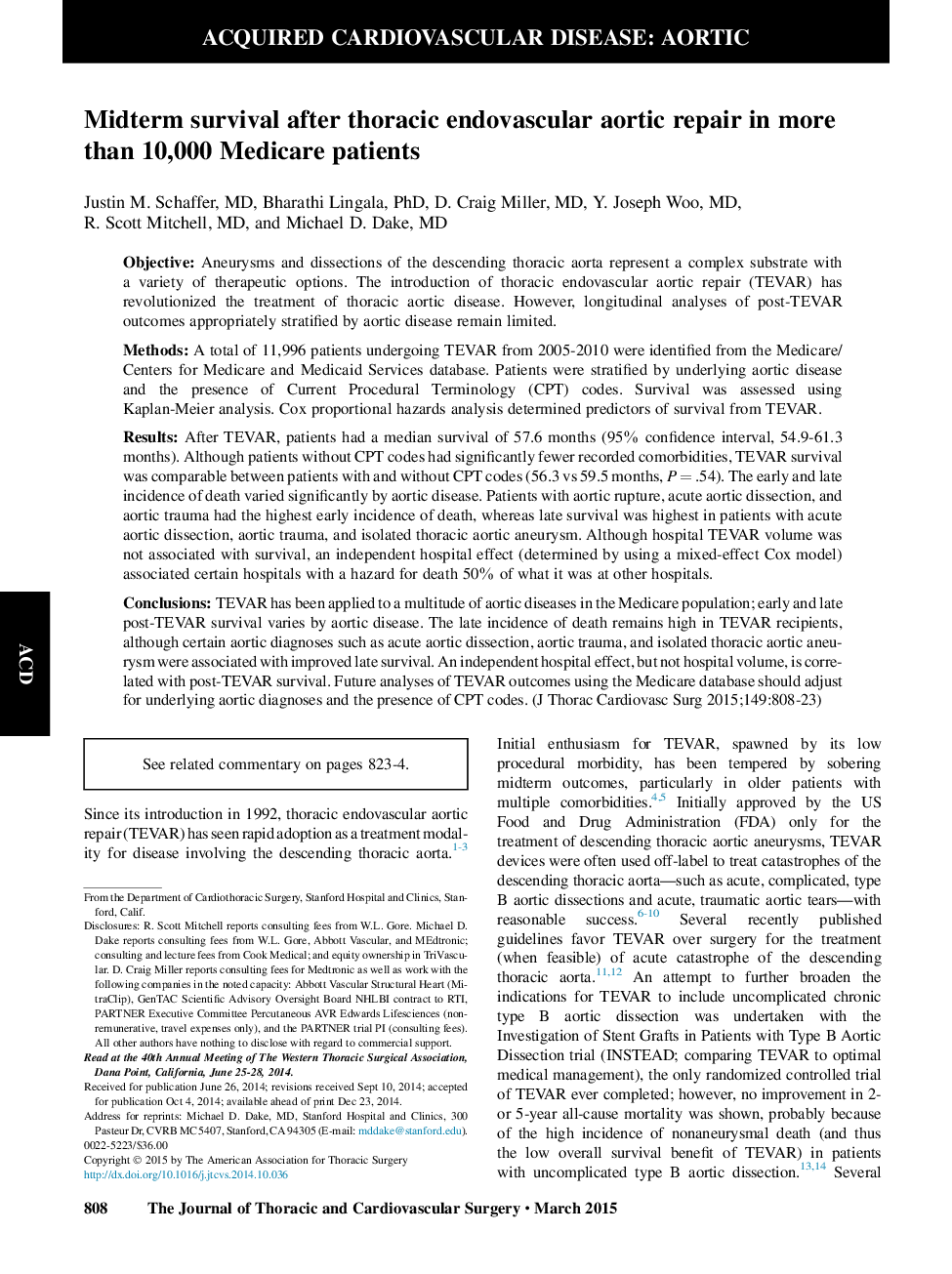| کد مقاله | کد نشریه | سال انتشار | مقاله انگلیسی | نسخه تمام متن |
|---|---|---|---|---|
| 5988908 | 1578600 | 2015 | 16 صفحه PDF | دانلود رایگان |
ObjectiveAneurysms and dissections of the descending thoracic aorta represent a complex substrate with a variety of therapeutic options. The introduction of thoracic endovascular aortic repair (TEVAR) has revolutionized the treatment of thoracic aortic disease. However, longitudinal analyses of post-TEVAR outcomes appropriately stratified by aortic disease remain limited.MethodsA total of 11,996 patients undergoing TEVAR from 2005-2010 were identified from the Medicare/Centers for Medicare and Medicaid Services database. Patients were stratified by underlying aortic disease and the presence of Current Procedural Terminology (CPT) codes. Survival was assessed using Kaplan-Meier analysis. Cox proportional hazards analysis determined predictors of survival from TEVAR.ResultsAfter TEVAR, patients had a median survival of 57.6 months (95% confidence interval, 54.9-61.3 months). Although patients without CPT codes had significantly fewer recorded comorbidities, TEVAR survival was comparable between patients with and without CPT codes (56.3 vs 59.5 months, P = .54). The early and late incidence of death varied significantly by aortic disease. Patients with aortic rupture, acute aortic dissection, and aortic trauma had the highest early incidence of death, whereas late survival was highest in patients with acute aortic dissection, aortic trauma, and isolated thoracic aortic aneurysm. Although hospital TEVAR volume was not associated with survival, an independent hospital effect (determined by using a mixed-effect Cox model) associated certain hospitals with a hazard for death 50% of what it was at other hospitals.ConclusionsTEVAR has been applied to a multitude of aortic diseases in the Medicare population; early and late post-TEVAR survival varies by aortic disease. The late incidence of death remains high in TEVAR recipients, although certain aortic diagnoses such as acute aortic dissection, aortic trauma, and isolated thoracic aortic aneurysm were associated with improved late survival. An independent hospital effect, but not hospital volume, is correlated with post-TEVAR survival. Future analyses of TEVAR outcomes using the Medicare database should adjust for underlying aortic diagnoses and the presence of CPT codes.
Journal: The Journal of Thoracic and Cardiovascular Surgery - Volume 149, Issue 3, March 2015, Pages 808-823
